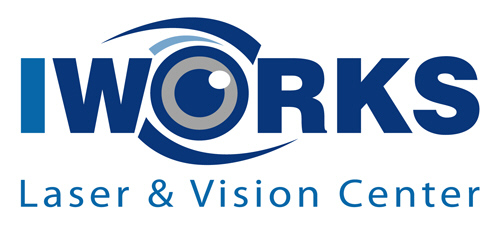Frequently Asked Questions
Frequently Asked Questions About Cataract & Lens Replacement Surgery
For basic information on Cataracts, visit this page: What Is A Cataract
No! Thanks to numbing drops and medications to help you relax, this procedure involves minimal discomfort. It is normal to experience some scratchiness, foreign body sensation, or a mild headache during the first 24 hours after surgery, but severe pain is rare and should be reported to Dr. Spencer right away.
Just like any surgical procedure, cataract surgery does have risks that can even include blindness. Fortunately, Dr. Spencer takes every precaution to minimize those risks, and has an extraordinary success rate with this procedure.
Since the procedure does not take very long, it is unnecessary to put you to sleep with general anesthesia. Fortunately this makes your surgery even safer. Instead, we will use topical/local anesthesia to numb the eye and you will remain awake during surgery. You will also be given an I.V. line placed into your arm for additional medicine to help you relax.
Only one eye will be operated on at a time. Typically, we will perform surgery on the following eye 3 to 4 weeks after the first eye. All patients are different and heal at different rates, so speak with us further to learn what is appropriate for you.
The surgery itself is very quick and usually lasts less than 15 minutes. However, due to pre-operative preparation and brief post-op recovery, your entire stay in the surgical center will be 2 to 2 1/2 hours.
Will I have stitches or have to wear a patch?
Dr. Spencer uses the most modern technique for cataract and lens replacement surgery that involves creating a tiny incision with either a laser or a blade that self-seals and does not require stitches. You will have the ability to see and blink. We will provide you with an eye shield to wear while you are sleeping during the first week. This is used to protect your eye so that you don’t rub it or put pressure on it while sleeping.
How long before I can see after surgery?
Every patient and eye is different, but many patients see well enough to drive the day after their surgery.
After surgery, will I be able to drive at night?
You should find that your ability to drive at night is improved once your cataract is removed. Once a lens has been implanted, you might notice rings, halos, or starbursts around point sources of light such as headlights or streetlights. This effect may be more noticeable with certain types of Multifocal Lens Implants. Fortunately, these visual effects are typically mild, rarely bothersome, and tend to diminish with time.
If I need glasses after cataract surgery, how soon can I get a prescription?
The eye typically takes 3 to 4 weeks to stabilize after cataract surgery. It is recommended that you wait until then to have a prescription made so as to allow for the most stable result. While your prescription will be more stable, the average lifespan of a pair of eyeglasses is approximately two years due to scratching, breakdown of lens coatings, and other wear and tear. For this reason, if you have opted for a lens implant still requiring you to wear eyeglasses, then you will still find a need to change your eyeglasses approximately every two years.
No, even if you elect not to have relaxing medication administered before surgery, your vision will be blurry in the operative eye (due to dilation and anesthesia) and not suitable for driving. You must arrange for transportation to and from the surgical center.
Most patients can return to normal basic activities like reading and watching TV by the next day, and return to work within one to seven days. However, results vary for different patients, so you should ask Dr. Spencer if you have questions about specific activities. We usually recommend that you avoid rubbing your eye, engaging in activities like sports where an object could hit the eye, and getting dust, dirt or sand in the eye. We also advise you to avoid swimming for two weeks after surgery. You may exercise if you avoid high impact activity during the first week. Most patient resume golf, tennis and other active sports or hobbies within one week.
This will depend on what type of Intraocular Lens you choose to have implanted as well as unique aspects to your eyes such as the presence and amount of astigmatism. Many people mistakenly believe that simply having cataract surgery will enable them to see perfectly without glasses. While having cataract surgery can improve the vision, the conventional lens implant is a single, fixed focus lens. It cannot give distance vision one moment and near vision the next (like the eye’s natural lens does in a young person). To learn more about which lens implants can decrease your dependence on glasses, ask Dr. Spencer or your surgical coordinator.
There is no one best intraocular lens implant. Selection of a lens implant is a very personal choice based on your visual needs, eye conditions, and postoperative expectations. This decision will be made by you with close discussion between our surgical counselor and Dr. Spencer.
When choosing an intraocular lens it is important to keep in mind that your vision works best when both eyes are focusing together. In most cases the answer is YES, however Dr. Spencer will review your personal needs.
If you should experience changes whereby you develop nearsightedness, farsightedness, or astigmatism, then you may be a candidate for a vision correction procedure or ‘enhancement’ such as laser PhotoRefractive Keratectomy.
No, surprisingly, the additional charge for implanting these special lenses is not covered and must be paid out-of-pocket by the patient.Because these lenses have nothing to do with improving the health of your eye, insurance companies and Medicare do not view them as ‘medically necessary.
Most patients will notice some amount of a ring or halo effect around point sources of light at night, especially in the first few days after surgery while the pupil is dilated. These are different from and less problematic than halos caused by cataracts. Fortunately, this effect is usually mild, generally does not interfere with your visual function, and tends to decrease throughout the course of the first year. During the first couple of weeks after surgery, some patients describe differences in the crispness of their near or intermediate vision when compared with their distance vision. With time, healing and adaptation to the lens implant optics, the crispness of each of these zones of vision tends to become more equal.
Negative dysphotopsias are the appearance of a dark line or parenthesis out of the corner of your peripheral vision that may be described as a dark shadow. This visual effect may occur in patients who have had otherwise perfect surgery with any type of intraocular lens implant. Though it is not well understood why this phenomenon occurs, it is believed to be related to changes in the optical system of the eye with the introduction of the lens implant. This temporarily creates an arc-shaped shadow over the peripheral retina when light enters and reflects within the lens implant. Fortunately, this effect generally goes away over 6 to 12 months after cataract surgery in most patients.
Although this would be considerably unlikely for it not to work, the lens implant or IOL can be replaced with a different one, if needed. Overall, lens implants are intended to be permanent and never need to be replaced under normal circumstances. The first lens implants were used starting after World War II, so there is considerable data supporting the long-term safety of lens implants.


